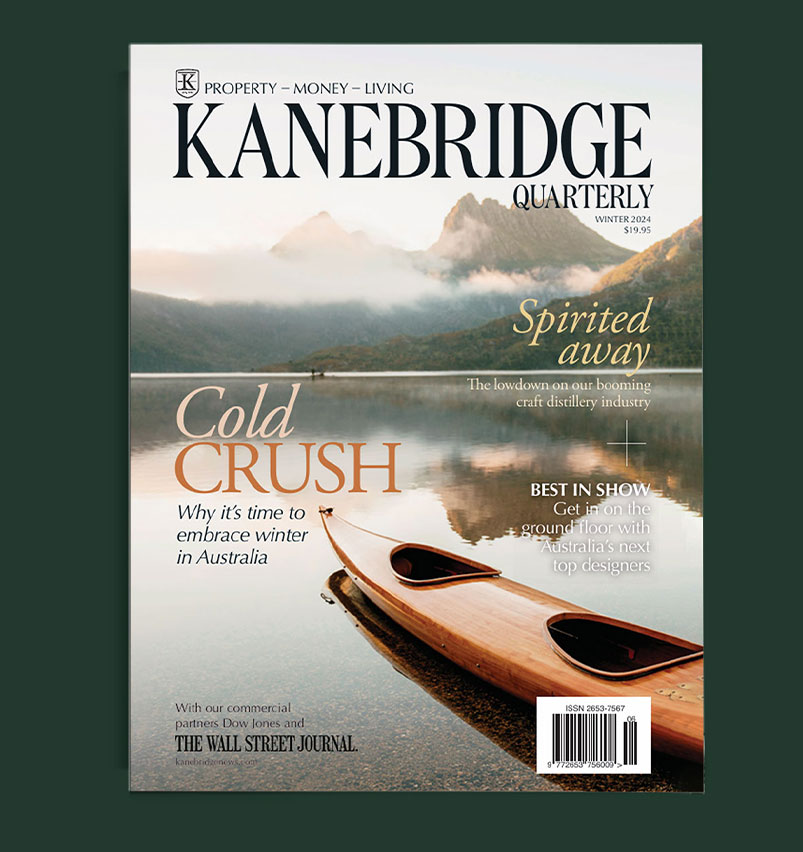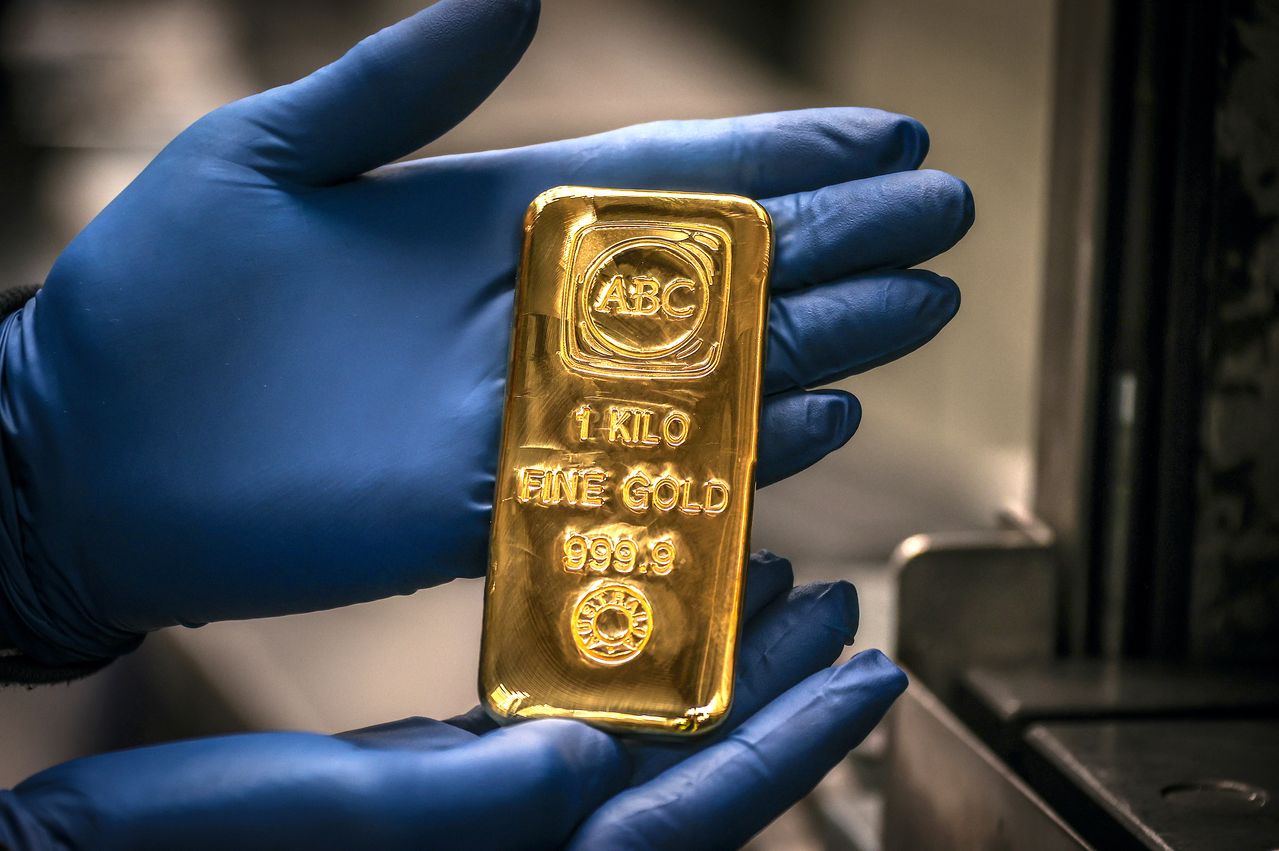Gold Is Way Down. Here’s When To Worry.
Gold has fallen from its lofty August levels. The precious metal appears to be at a crossroads, but the price likely has to slide more from here in order for investors to get really spooked.
The price of gold ran up 37% between March 15, 2020—roughly when investors were most fearful about the economic damage from the Covid 19 pandemic—and August 2, 2020. That day, gold hit an all-time high of US$2,028, as seen by the Gold Continuous Contract (GC00). Even though stocks rose in that time span, demand for haven assets remained strong, as there weren’t many meaningful signs that the world would soon emerge from the pandemic.
Since hitting a record, the commodity has fallen 9% to date. “The long-term uptrend in gold is teetering on the edge,” wrote Jason Goepfert, founder of Sundial Capital Research in a note.
While gold has been in a concerning downtrend of late, gold-related stocks offer some optimism for the precious metal. Gold mining stocks are typically correlated with the actual commodity price. As an example, Goepfert highlights the VanEck Vectors Gold Miners ETF (GDX), which has largely echoed gold’s moves over the past year. The ETF rose more than twofold between mid-March and early August, before falling 20% from the August level to date.
But now gold mining stocks suggest there could be brighter days ahead for the commodity. Roughly 20% of gold mining stocks have been trading above their 200-day moving averages on most days in the past two weeks, down from more than 85% of those stocks recently, Goepfert said. This cycle has occurred several times in the past few years and usually precedes gains for most gold stocks in the coming three-month period, Goepfert says.
Even if gold price trends cannot reverse themselves, it likely isn’t time to get too bearish yet. The key price level to watch for the contract for the actual metal is US$1780, according to Sevens Report Research. A dip below that would be a negative signal, representing a double-digit percentage drop from the current level. Gold dropped to around that level in late November, but quickly popped back.
Gold may be at a fork in the road, but investors might not want to unload their gold holdings just yet.
 Copyright 2020, Dow Jones & Company, Inc. All Rights Reserved Worldwide. LEARN MORE
Copyright 2020, Dow Jones & Company, Inc. All Rights Reserved Worldwide. LEARN MORE
This stylish family home combines a classic palette and finishes with a flexible floorplan
Just 55 minutes from Sydney, make this your creative getaway located in the majestic Hawkesbury region.
Continued stagflation and cost of living pressures are causing couples to think twice about starting a family, new data has revealed, with long term impacts expected
Australia is in the midst of a ‘baby recession’ with preliminary estimates showing the number of births in 2023 fell by more than four percent to the lowest level since 2006, according to KPMG. The consultancy firm says this reflects the impact of cost-of-living pressures on the feasibility of younger Australians starting a family.
KPMG estimates that 289,100 babies were born in 2023. This compares to 300,684 babies in 2022 and 309,996 in 2021, according to the Australian Bureau of Statistics (ABS). KPMG urban economist Terry Rawnsley said weak economic growth often leads to a reduced number of births. In 2023, ABS data shows gross domestic product (GDP) fell to 1.5 percent. Despite the population growing by 2.5 percent in 2023, GDP on a per capita basis went into negative territory, down one percent over the 12 months.
“Birth rates provide insight into long-term population growth as well as the current confidence of Australian families,” said Mr Rawnsley. “We haven’t seen such a sharp drop in births in Australia since the period of economic stagflation in the 1970s, which coincided with the initial widespread adoption of the contraceptive pill.”
Mr Rawnsley said many Australian couples delayed starting a family while the pandemic played out in 2020. The number of births fell from 305,832 in 2019 to 294,369 in 2020. Then in 2021, strong employment and vast amounts of stimulus money, along with high household savings due to lockdowns, gave couples better financial means to have a baby. This led to a rebound in births.
However, the re-opening of the global economy in 2022 led to soaring inflation. By the start of 2023, the Australian consumer price index (CPI) had risen to its highest level since 1990 at 7.8 percent per annum. By that stage, the Reserve Bank had already commenced an aggressive rate-hiking strategy to fight inflation and had raised the cash rate every month between May and December 2022.
Five more rate hikes during 2023 put further pressure on couples with mortgages and put the brakes on family formation. “This combination of the pandemic and rapid economic changes explains the spike and subsequent sharp decline in birth rates we have observed over the past four years,” Mr Rawnsley said.
The impact of high costs of living on couples’ decision to have a baby is highlighted in births data for the capital cities. KPMG estimates there were 60,860 births in Sydney in 2023, down 8.6 percent from 2019. There were 56,270 births in Melbourne, down 7.3 percent. In Perth, there were 25,020 births, down 6 percent, while in Brisbane there were 30,250 births, down 4.3 percent. Canberra was the only capital city where there was no fall in the number of births in 2023 compared to 2019.
“CPI growth in Canberra has been slightly subdued compared to that in other major cities, and the economic outlook has remained strong,” Mr Rawnsley said. “This means families have not been hurting as much as those in other capital cities, and in turn, we’ve seen a stabilisation of births in the ACT.”
This stylish family home combines a classic palette and finishes with a flexible floorplan
Just 55 minutes from Sydney, make this your creative getaway located in the majestic Hawkesbury region.






















